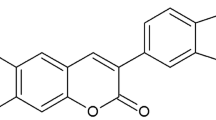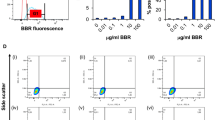Abstract
Phosphatidylserine (PS), which is normally located on the inner leaflet of the plasma membrane, translocates to the outer leaflet at the early stage of apoptosis. The PS externalization provides a signal for phagocytes to initiate uptake of apoptotic cells. After phagocytosis of apoptotic cells, phagocytes induce the secretion of anti-inflammatory mediators including prostaglandin E2 (PGE2). PS-containing liposomes (PSLs) can mimic the effects of apoptotic cells on phagocytes to induce the secretion of PGE2. PSLs induce the PGE2 secretion from microglia without induction of either cyclooxygenase (COX)-2 or microsomal prostaglandin E synthase (mPGES)-1. PSLs are found to rather utilize COX-1/mPGES-2 system to produce PGE2 secretion and then shift microglia and macrophages from pro- to anti-inflammatory phenotype by an autocrine action of PGE2. Moreover, PSLs inhibit the maturation of dendritic cells and osteoclast precursors. Therefore, PSLs will be potential pharmacological interventions for inflammatory and immune diseases through feedback mechanism utilizing PGE2.



Similar content being viewed by others
References
Aloisi F, De Simone R, Columba-Cabezas S et al (1999) Opposite effects of interferon-gamma and prostaglandin E2 on tumor necrosis factor and interleukin-10 production in microglia: a regulatory loop controlling microglia pro- and anti-inflammatory activities. J Neurosci Res 56:571–580
Athanasou NA, Quinn J (1990) Immunophenotypic differences between osteoclasts and macrophage polykaryons: immunohistological distinction and implications for osteoclast ontogeny and function. J Clin Pathol 43:997–1003
Banchereau J, Steinman RM (1998) Dendritic cells and the control of immunity. Nature 392:245–252
Boabaid F, Cerri PS, Katchburian E (2001) Apoptotic bone cells may be engulfed by osteoclasts during alveolar bone resorption in young rats. Tissue Cell 33:318–325
Cerri PS, Boabaid F, Katchburian E (2003) Combined TUNEL and TRAP methods suggest that apoptotic bone cells are inside vacuoles of alveolar bone osteoclasts in young rats. J Periodontal Res 38:223–226
Chae BS, Shin TY, Kim DK et al (2008) Prostaglandin E2-mediated dysregulation of proinflammatory cytokine production in pristane-induced lupus mice. Arch Pharm Res 31:503–510
Chen X, Doffek K, Sugg SL et al (2004) Phosphatidylserine regulates the maturation of human dendritic cells. J Immunol 173:2985–2994
Conconi MT, Tommasini M, Baiguera S et al (2002) Effects of prostaglandin E1 and E2 on the growth and differentiation of osteoblast-like cells cultured in vitro. Int J Mol Med 10:451–456
De SR, Ajmone-Cat MA, Nicolini A et al (2002) Expression of phosphatidylserine receptor and down-regulation of pro-inflammatory molecule production by its natural ligand in rat microglial cultures. J Neuropathol Exp Neurol 61:237–244
Dieter P, Hempel U, Kamionka S et al (1999) Prostaglandin E2 affects differently the release of inflammatory mediators from resident macrophages by LPS and muramyl tripeptides. Mediators Inflamm 8:295–303
Fadok VA, Bratton DL, Konowal A et al (1998) Macrophages that have ingested apoptotic cells in vitro inhibit proinflammatory cytokine production through autocrine/paracrine mechanisms involving TGF-β, PGE2, and PAF. J Clin Invest 101:890–898
Fennekohl A, Sugimoto Y, Segi E et al (2002) Contribution of the two Gs-coupled PGE2-receptors EP2-receptor and EP4-receptor to the inhibition by PGE2 of the LPS-induced TNF-alpha-formation in Kupffer cells from EP2- or EP4-receptor-deficient mice. Pivotal role for the EP4-receptor in wild type Kupffer cells. J Hepatol 36:328–334
Flanagan AM, Chambers TJ (1992) Stimulation of bone nodule formation in vitro by prostaglandin E1 and E2. Endocrinology 130:443–448
Fujino H, Salvi S, Regan JW (2005) Differential regulation of phosphorylation of the cAMP response element-binding protein after activation of EP2 and EP4 prostanoid receptors by prostaglandin E2. Mol Pharmacol 68:251–259
Gao Q, Xu M, Alander CB et al (2009) Effects of prostaglandin E2 on bone in mice in vivo. Prostaglandins Other Lipid Mediat 89:20–25
Hakeda Y, Nakatani Y, Kurihara N et al (1985) Prostaglandin E2 stimulates collagen and non-collagen protein synthesis and prolyl hydroxylase activity in osteoblastic clone MC3T3-E1 cells. Biochem Biophys Res Commun 126:340–345
Harizi H, Norbert G (2004) Inhibition of IL-6, TNF-α, and cyclooxygenase-2 protein expression by prostaglandin E2-induced IL-10 in bone marrow-derived dendritic cells. Cell Immunol 228:99–109
Harizi H, Juzan M, Pitard V et al (2002) Cyclooxygenase-2-issued prostaglandin E2 enhances the production of endogenous IL-10, which down-regulates dendritic cell functions. J Immunol 168:2255–2263
Harizi H, Grosset C, Gualde N et al (2003) Prostaglandin E2 modulates dendritic cell function via EP2 and EP4 receptor subtypes. J Leukoc Biol 73:756–763
Hoffmann PR, deCathelineau AM, Ogden CA (2001) Phosphatidylserine (PS) induces PS receptor-mediated macropinocytosis and promotes clearance of apoptotic cells. J Cell Biol 155:649–659
Hurley MM, Lee SK, Raisz LG et al (1998) Basic fibroblast growth factor induces osteoclast formation in murine bone marrow cultures. Bone 22:309–316
Huynh ML, Fadok VA, Henson PM (2002) Phosphatidylserine-dependent ingestion of apoptotic cells promotes TGF-β1 secretion and the resolution of inflammation. J Clin Invest 109:41–50
Itonaga I, Sabokbar A, Neale SD et al (1999) 1,25-Dihydroxyvitamin D3 and prostaglandin E2 act directly on circulating human osteoclast precursors. Biochem Biophys Res Commun 264:590–595
Iyoda T, Shimoyama S, Liu K et al (2002) The CD8+ dendritic cell subset selectively endocytoses dying cells in culture and in vivo. J Exp Med 195:1289–1302
Jing H, Vassiliou E, Ganea D (2003) Prostaglandin E2 inhibits production of the inflammatory chemokines CCL3 and CCL4 in dendritic cells. J Leukoc Biol 74:868–879
Kim EJ, Kwon KJ, Park JY et al (2002) Neuroprotective effects of prostaglandin E2 or cAMP against microglial and neuronal free radical mediated toxicity associated with inflammation. J Neurosci Res 70:97–107
Kobayashi Y, Take I, Yamashita T et al (2005) Prostaglandin E2 receptors EP2 and EP4 are down-regulated during differentiation of mouse osteoclasts from their precursors. J Biol Chem 280:24035–24042
Kong YY, Yoshida H, Sarosi I et al (1999) OPGL is a key regulator of osteoclastogenesis, lymphocyte development and lymph-node organogenesis. Nature 397:315–323
Kreutzberg GW (1996) Microglia: a sensor for pathological events in the CNS. Trends Neurosci 19:312–318
Li J, Sarosi I, Yan XQ et al (2000) RANK is the intrinsic hematopoietic cell surface receptor that controls osteoclastogenesis and regulation of bone mass and calcium metabolism. Proc Natl Acad Sci USA 97:1566–1571
Liu B, Hong JS (2003) Role of microglia in inflammation-mediated neurodegenerative diseases: mechanisms and strategies for therapeutic intervention. J Pharmacol Exp Ther 304:1–7
Mittal J, Dogra N, Vohra H et al (2001) Effects of prostaglandin E2 and nitric oxide inhibitors on the expression of interleukin-10, interleukin-12 and MHC class-II molecules in Mycobacterium microti-infected and interferon-gamma-treated mouse peritoneal macrophages. Folia Microbiol 46:259–264
Miyamoto T, Phneda O, Arai F et al (2001) Bifurcation of osteoclasts and dendritic cells from common progenitors. Blood 98:2544–2554
Murakami M, Nakatani Y, Kuwata H et al (2000) Cellular components that functionally interact with signaling phospholipase A2s. Biochim Biophys Acta 1488:159–166
Murakami M, Nakashima K, Kamei D et al (2003) Cellular prostaglandin E2 production by membrane-bound prostaglandin E synthase-2 via both cyclooxygenases-1 and -2. J Biol Chem 278:37937–37947
Nagata T, Kaho K, Nishikawa S et al (1994) Effect of prostaglandin E2 on mineralization of bone nodules formed by fetal rat calvarial cells. Calcif Tissue Int 55:451–457
Norgauer J, Ibig Y, Gmeiner D et al (2003) Prostaglandin E2 synthesis in human monocyte-derived dendritic cells. Int J Mol Med 12:83–86
Ogawa M, Suzuki J, Kosuge H et al (2009) The mechanism of anti-inflammatory effects of prostaglandin E2 receptor 4 activation in murine cardiac transplantation. Transplantation 87:1645–1653
Okada Y, Lorenzo JA, Freeman AM et al (2000) Prostaglandin G/H synthase-2 is required for maximal formation of osteoclast-like cells in culture. J Clin Invest 105:823–832
Otsuka M, Tsuchiya S, Aramaki Y (2004) Involvement of ERK, a MAP kinase, in the production of TGF-beta by macrophages treated with liposomes composed of phosphatidylserine. Biochem Biophys Res Commun 324:1400–1405
Perry VH, Gordon S (1988) Macrophages and microglia in the nervous system. Trends Neurosci 11:273–277
Petrova TV, Akama KT, Van Eldik LJ (1999) Selective modulation of BV-2 microglial activation by prostaglandin E2. Differential effects on endotoxin-stimulated cytokine induction. J Biol Chem 274:28823–28827
Roux S, Pichaud F, Qinn J et al (1997) Effects of prostaglandins on human hematopoietic osteoclast precursors. Endocrinology 138:1476–1482
Rouzer CA, Kingsley PJ, Wang H et al (2004) Cyclooxygenase-1-dependent prostaglandin synthesis modulates tumor necrosis factor-alpha secretion in lipopolysaccharide-challenged murine resident peritoneal macrophages. J Biol Chem 279:34256–34268
Shi D, Fu M, Fan P et al (2007) Artificial phosphatidylserine liposome mimics apoptotic cells in inhibiting maturation and immunostimulatory function of murine myeloid dendritic cells in response to 1-chloro-2,4-dinitrobenze in vitro. Arch Dermatol Res 299:327–336
Shibata Y, Nishiyama A, Ohata H et al (2005) Differential effects of IL-10 on prostaglandin H synthase-2 expression and prostaglandin E2 biosynthesis between spleen and bone marrow macrophages. J Leukoc Biol 77:544–551
Spaggiari GM, Abdelrazik H, Becchetti F et al (2009) MSCs inhibit monocyte-derived DC maturation and function by selectively interfering with the generation of immature DCs: central role of MSC-derived prostaglandin E2. Blood 113:6576–6583
Stafford JB, Marnett LJ (2008) Prostaglandin E2 inhibits tumor necrosis factor-alpha RNA through PKA type I. Biochem Biophys Res Commun 366:104–109
Steinman RM, Turley S, Mellman I et al (2000) The induction of tolerance by dendritic cells that have captured apoptotic cells. J Exp Med 191:411–416
Suk K, Yeou Kim S, Kim H (2001) Regulation of IL-18 production by IFN-γ and PGE2 in mouse microglial cells: involvement of NF-κB pathway in the regulatory processes. Immunol Lett 77:79–85
Takayama K, García-Cardena G, Sukhova GK et al (2002) Prostaglandin E2 suppresses chemokine production in human macrophages through the EP4 receptor. J Biol Chem 277:44147–44154
Take I, Kobayashi Y, Yamamoto Y et al (2005) Prostaglandin E2 strongly inhibits human osteoclast formation. Endocrinology 146:5204–5014
Tanaka M, Sakai A, Uchida S et al (2004) Prostaglandin E2 receptor (EP4) selective agonist (ONO-4819.CD) accelerates bone repair of femoral cortex after drill-hole injury associated with local upregulation of bone turnover in mature rats. Bone 34:940–948
Teitelbaum SL, Ross FP (2003) Genetic regulation of osteoclast development and function. Nat Rev Genet 4:638–649
Tian XY, Zhang Q, Zhao R et al (2008) Continuous PGE2 leads to net bone loss while intermittent PGE2 leads to net bone gain in lumbar vertebral bodies of adult female rats. Bone 42:914–920
van der Pouw Kraan TC, van Lier RA, Aarden LA (1995) PGE2 and the immune response. A central role for prostaglandin E2 in downregulating the inflammatory immune response. Mol Med Today 1:61
Vassiliou E, Jing H, Ganea D (2003) Prostaglandin E2 inhibits TNF production in murine bone marrow-derived dendritic cells. Cell Immunol 223:120–132
Wu Z, Nakanishi H (2010) Regulation of myeloid derived phagocytes by phosphatidylserine-containing liposomes: possible involvement of prostaglandin E2 and potential therapeutic application. In: Goodwin GM (ed) Prostaglandins: biochemistry, functions, types and roles. Nova Science Publishers, Inc., New York, pp 81–92
Wu X, Zeng LH, Taniguchi T (2007) Activation of PKA and phosphorylation of sodium-dependent vitamin C transporter 2 by prostaglandin E2 promote osteoblast-like differentiation in MC3T3-E1 cells. Cell Death Differ 14:1792–1801
Wu Z, Ma HM, Kukita T et al (2010) Phosphatidylserine-containing liposomes inhibit the differentiation of osteoclasts and trabecular bone loss. J Immunol 184:3191–3201
Yoshida K, Oida H, Kobayashi T et al (2002) Stimulation of bone formation and prevention of bone loss by prostaglandin E EP4 receptor activation. Proc Natl Acad Sci USA 99:4580–4585
Zhang J, Fujii S, Wu Z et al (2006) Involvement of COX-1 and up-regulated prostaglandin E synthases in phosphatidylserine liposome-induced prostaglandin E2 production by microglia. J Neuroimmunol 172:112–120
Acknowledgments
Studies conducted in our laboratories were supported by Grants-in-Aid for Scientific Research from the Ministry of Education, Science and Culture, Japan (No. 20592174 to Zhou Wu and No. 20390472 to Hiroshi Nakanishi).
Author information
Authors and Affiliations
Corresponding authors
About this article
Cite this article
Wu, Z., Nakanishi, H. Phosphatidylserine-Containing Liposomes: Potential Pharmacological Interventions Against Inflammatory and Immune Diseases Through the Production of Prostaglandin E2 After Uptake by Myeloid Derived Phagocytes. Arch. Immunol. Ther. Exp. 59, 195–201 (2011). https://doi.org/10.1007/s00005-011-0123-4
Received:
Accepted:
Published:
Issue Date:
DOI: https://doi.org/10.1007/s00005-011-0123-4




